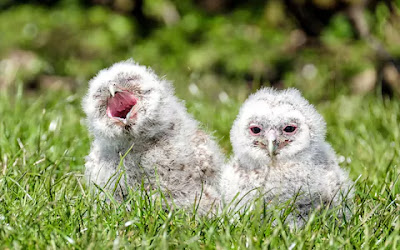Why do so many animals have their babies in the spring? There’s more food available, and because the days are longer, the mamas have more time to find food. Plus, warmer weather and regular rainfall maximize plant, a.k.a. food, growth.
If you’re not already psyched for springtime, these spring-lovin’ baby animals will give some well-earned spring fever...
1. Bunnies!
It’s well-known that bunnies are born in spring and they have huge litters. Mama bunnies can give birth to up to nine babies each time. They are essentially helpless for the first week of their life. But did you know baby bunnies are actually called “kittens?” Yep, they just got even cuter.

2. Deer!
Baby deer, otherwise known as fawns, have 294 to 306 spots on their body. Newborns are able to walk within hours of being born, and are essentially odorless to predators, which protects them during the first months of their life. They stay with their moms for about one year before they finally grow up and get a job, already.

3. Porcupine!
Baby porcupines are called porcupettes. They are born with long, soft hairs that transform into sharp quills within a few days of their birth. Porcupettes are about 3 percent of mother's weight at birth. Porcupettes mature at 9 months to 2.5 years, depending on species and can live up to 15 years in the wild, lookin sharp the whole time!

4. Wolves!
When wolf pups are first born, they're completely blind and deaf, and have little to no sense of smell. Baby wolves grow rapidly, and gain between 2.6 and 3.3 pounds per week for the first 14 weeks of their lives. When they reach between 11 and 15 days old, their eyes will open and they'll begin to see. At first, wolf pups will only consume their mother's milk, and on average will feed four or five times a day. They gain plenty of nutrition to help them grow during this period. By the time they reach roughly 2 weeks old, they have their first milk teeth and can start to "wolf" down small pieces of meat.5. Owls!
Baby owls are called owlets! Owl chicks are born with the help of an egg tooth, which will fall off after a week or two. Owls lay their eggs over the course of a few days, so there will always be a size difference in the owl siblings, as they hatch at different times. Owlets will stay in the nest for just about six weeks after hatching, depending on the species. They sound like a real "hoot".
As we all appreciate the cuteness of these animals, remember that the best thing to do if you find a baby animal in the wild is leave it alone. If you find one that is visibly injured, that's the time to call your local wildlife rescue and tell them about the animal. They may be adorable but they belong in the wild.



No comments:
Post a Comment